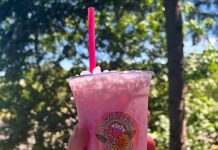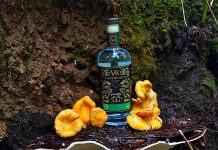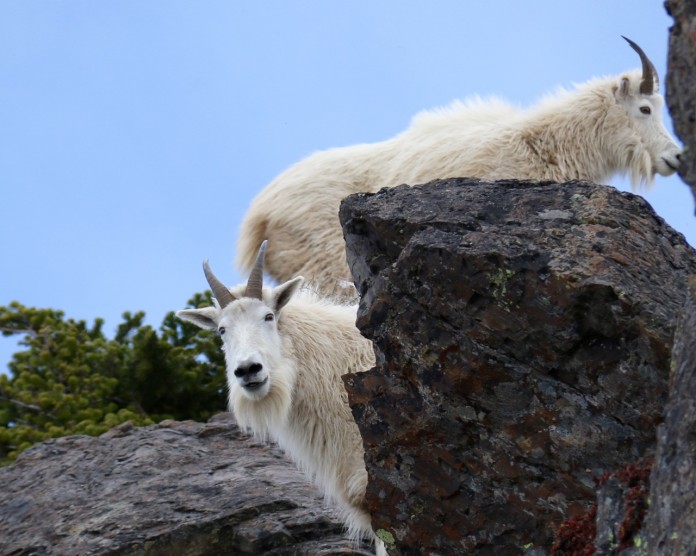
By Douglas Scott
 The Hood Canal region of the Olympic Peninsula is known for natural diversity. Home to dense forests, steep rivers, majestic mountains and breathtaking waterfalls, the region is stuffed with beauty. In fact, it is hard to think of a place more diverse and beautiful than Hood Canal. Each year, the region sees hundreds of thousands of visitors, each hoping to make a memory in this beautiful corner of the world. While most come for the beauty and solitude, many come to this corner of the Peninsula to see animals in true wilderness.
The Hood Canal region of the Olympic Peninsula is known for natural diversity. Home to dense forests, steep rivers, majestic mountains and breathtaking waterfalls, the region is stuffed with beauty. In fact, it is hard to think of a place more diverse and beautiful than Hood Canal. Each year, the region sees hundreds of thousands of visitors, each hoping to make a memory in this beautiful corner of the world. While most come for the beauty and solitude, many come to this corner of the Peninsula to see animals in true wilderness.
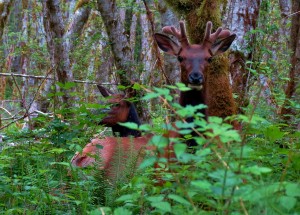
Whether you are on the summit of an Olympic Mountain, or standing on the shores along Hood Canal, wildlife comes in droves to this unique and beautiful region of the Pacific Northwest. While you can technically see animals anywhere on the Hood Canal, there are three distinct regions where those looking for wildlife stand the best chance to see something awesome. Keep in mind that this is not a guaranteed location finder for wildlife, but it should help you get to the right place at the right time to have the best opportunity to see an animal.
The Canal
Animal watching on Hood Canal is the easiest place to see a wide variety of wildlife with little effort. Starting at Union and Hoodsport, birds such as bald eagles, blue herons and kingfishers are commonly seen, with the highest likelihood during the fall and winter months. For a nearly guaranteed eagle sighting, look for the huge dead tree above Highway 101 south of Hoodsport.
Viewpoints such as Potlatch State Park and Seal Rock, as well as any pull-offs between the towns of Lilliwaup and Brinnon are great locations to grab a pair of binoculars and scan. Along these same locations, those with a keen eye will see seals, an occasional porpoise and maybe even an extremely rare Orca sighting in the water.
While the most visible animals along Hood Canal will be in the air or in the water, elk sightings frequently occur near the town of Brinnon, specifically between Dosewallips State Park and the road leading to Olympic National Park. Most commonly seen during the fall and winter months, elk can and will be on either side of the road, often standing right along the shores of Hood Canal.
The River Valleys
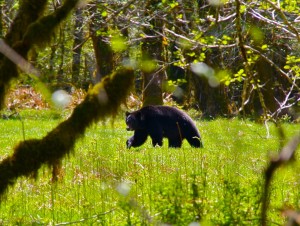
When driving along Hood Canal, there are three main river valleys that are your most likely locations for animal activity. The South Fork of the Skokomish River, near Union, Shelton and Hoodsport is a great place to see elk year round. Starting right along West Skokomish Valley Road and continuing all the way through the Forest Service Roads to Wynoochee, this area is great for seeing elk, bear and rumored to be a frequent hang out for Sasquatch.
For elk, your best months will be during the fall, winter and early spring, though summer sightings are not rare. Bear are seen in this region during the late spring months, becoming less frequent as the days grow longer and warmer. Most bear are seen along the river or on the logged-out hill, mainly in the early morning or late evening hours. Seeing them is quite difficult, but with time and patience, you might get lucky.
The river areas also have numerous bobcat dens and are prime cougar habitat, though seeing either is rarer than seeing a bear. The region is also quite popular for eagles and osprey, making it a fun place to go birding. This river is also popular in the fall for salmon, specifically through the months of August to October. Your best bet at seeing salmon jump and swim will be between Highway 101 and Union, along the Purdy Creek Cutoff Road.
The North Fork Skokomish River Valley near Lake Cushman and in Olympic National Park is also an incredible area for seeing wildlife. Just like the South Forth of the Skokomish, the North Fork of the Skokomish has frequent elk sightings in the fall and winter months, as well as the occasional bear in the spring months. Your best bet to see elk will start at the end of Lake Cushman, just as you enter Olympic National Park. They tend to congregate along the river bank, but blend in quite well. Hikers on trails in the Staircase region of Olympic National Park have also reported seeing bobcat and mountain lion, but again, those are rare.
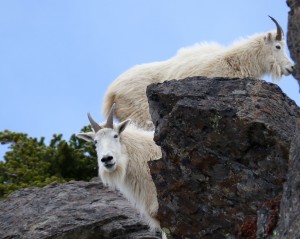
Along the trails and even from the road, numerous species of hawks can be seen, as well as eagles and osprey. In the winter, an occasional pair of swans can be spotted swimming in Lake Cushman.
Finally, the best river valley for animal sightings is along the Dosewallips River Valley. While the Hamma Hamma is worth mentioning, the Dosewallips is full of eagles, elk, occasional bear and is your best best to see a bobcat. Be aware that elk can be seen along any stretch of the Dosewallips River, though you will more than likely see them in Brinnon. Eagles are also commonly seen along the river, though they can also frequently be seen at the mouth of the Duckabush and Hamma Hamma Rivers.
The Mountains
While not everyone will take hikes to the summits of the mountains along Hood Canal, those who do are rewarded with not just with the best panoramic views in America but also the chance to see both native and non-native wildlife. (Read a full story about 6 Hood Canal hikes here.) For most who hike and climb the mountain trails, encounters with mountain goats and marmots are quite common and part of the joy of exploring the region.
The mountains of Hood Canal are probably most famous, and infamous, for the mountain goats that roam the rocky summits. Mountain goats are not native to the Olympic Mountains and were placed here in the 1930s. Seen year round, it is important to stress that these goats can be aggressive and occasionally dangerous. However, they are safe and fun to look at from a distance. Mountain goats can most often be seen on Mount Ellinor near Lake Cushman and at Lake of the Angels above the Hamma Hamma River.
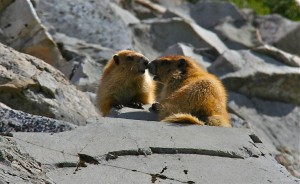
On those same trails, a unique species to the Olympic Mountains is commonly seen in the summer months, the Olympic Marmot which is endemic to the area. Burrowing in rocks, these social animals chirp, whistle and scamper around on the rocky sections of the Olympics. Adults can weigh up to 15 pounds and on warm days often lounge on rocks, absorbing the sun. Marmots are found above 4,000 feet, so seeing them requires some hiking.
Animals can be found all around Hood Canal, but by heading out to these locations during the right season, you increase your likelihood to see one. With an abundance of animals, including spot shrimp and oysters, it is little wonder that the Hood Canal region has been supporting life, big and small, for tens of thousands of years.
Locate your favorite animal along Hood Canal – you never know, you might see them all!





